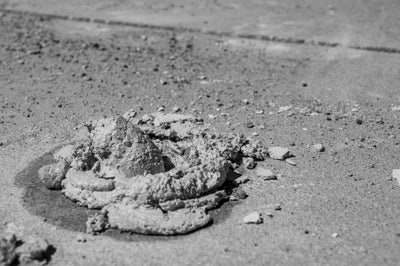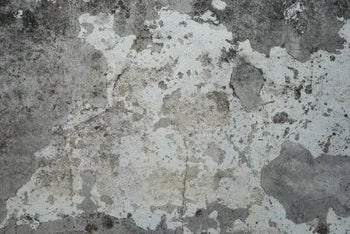7 Reasons to Avoid Mudjacking

When it comes to fixing sinking concrete around your home, you might have heard of mudjacking as a go-to solution. It’s been around for a while, being a concrete lifting standard for years.
However, with the invention of more effective and modern methods, mudjacking is no longer the best option. Let’s dive into the world of concrete repair and uncover seven reasons why mudjacking might not be the best idea for your home.
Major Reasons You Shouldn’t Use Mudjacking
1. Poor Longevity and Durability
Mudjacking involves pumping a mixture of water, soil, and cement under your sinking concrete to lift it. However, this mixture can break down over time, leading to the same problem again. On the other hand, polyurethane foam, used by Bay Area Underpinning, lasts much longer and doesn’t degrade as easily. This means you won’t have to worry about fixing the same issue repeatedly.
2. Weight Concerns
The slurry used in mudjacking is quite heavy because it’s made of concrete and soil. This added weight can cause further sinking over time, especially if the soil beneath is already weak. Polyurethane foam is much lighter, which helps avoid additional stress on the soil. Choosing a lighter solution can prevent future problems and save money.
3. Environmental Impact
Mudjacking uses materials that aren’t always kind to the environment. The process can disturb local ecosystems and contribute to pollution. Polyurethane foam, however, is designed to be more eco-friendly, and Bay Area Underpinning prioritizes materials that minimize harm to the environment.
4. Precision and Control
Mudjacking doesn’t easily allow for precise control when lifting concrete. This can result in uneven surfaces or the need for additional adjustments in the future. Polyurethane foam injections offer much more accuracy, ensuring a level and stable result. Our team can carefully control the lift to match your specific needs.
5. Aesthetic Considerations
Mudjacking requires drilling large holes in your concrete, which can be unsightly. These holes are often noticeable even after they’re filled. Polyurethane foam injections need much smaller (penny-sized) holes, making them less visible and keeping your concrete looking better. This method helps maintain the appearance of your property.
6. Cure Time
After the mudjacking process, you might have to wait several days before you can use the lifted area again. This can be inconvenient, especially for busy walkways or driveways. Polyurethane foam cures much faster, often within 30 minutes. This quick cure time means you can return to normal use sooner.
7. Cost-Effectiveness in the Long Run
While mudjacking might seem cheaper initially, it’s generally not the most cost-effective solution over time. The potential for repeated applications due to material degradation can increase costs. Polyurethane foam, though possibly more expensive up front, tends to last longer and requires less maintenance. Investing in a durable solution saves money and hassle in the long run.
What’s the Best Way to Lift Concrete?

Polyurethane injection is a modern way to fix sinking concrete and it has many great points that make it better than old methods like mudjacking. First off, it’s really light, so it won’t make the ground underneath sink or move more.
Even though it’s light, polyurethane is incredibly strong, so it can last a long time without getting damaged by water or heavy loads. This means once you fix your concrete with it, you won’t have to worry about fixing it again for a long while.
Polyurethane foam also fills up empty spaces under the concrete as it expands, lifting concrete back to where it should be while. Plus, it cures the same day as installation, so you can walk or drive on the concrete just a few hours after it’s done.
As a bonus, polyurethane injection is good for the planet, using safe materials that don’t harm the environment. At Bay Area Underpinning, we use PolyRenewal™, our version of polyurethane injection.
FAQs
Yes, mudjacking leaves behind holes in the concrete where the slurry was injected. These holes are usually filled in with concrete or a similar material, but they might still be visible after the repair. The visibility of these patches can be a concern for some homeowners, especially in highly visible areas.
Mudjacking is a repair process used to lift and stabilize sinking concrete slabs. It involves drilling holes into the concrete and pumping a mixture of water, soil, and cement (often referred to as slurry) underneath the slab to raise it back to its original level.
The estimated installation timeline for PolyRenewal™ depends on the area requiring repair and the amount of damage. However, in most cases, concrete step repair can be completed within a day. Once the foam is injected beneath the concrete, it takes approximately 15 minutes to cure, compared to mudjacking or repouring, which may require several days to fully restore functionality. Contact us to schedule a free inspection and estimate.
Schedule a Free Concrete Inspection With Bay Area Underpinning

Now that you understand the risks of using mudjacking to lift concrete, you can make a more informed choice. If you need a professional opinion, Bay Area Underpinning is ready to help with free inspections and no-obligation repair quotes.
Trusted by Bay Area residents for our exceptional customer support and high-quality repair solutions, we bring over 15 years of expertise to ensure the highest standards of excellence. Contact Bay Area Underpinning today to schedule a free inspection!
Related Resources
Publish Date:
Last Modified Date:

Our Locations
2333 Courage Dr. Suite C
Fairfield, CA 94533
1161 N Fair Oaks Ave
Sunnyvale, CA 94089



